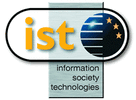

The goal of this deliverable is to survey the state of the art on modelling techniques for the Semantic Web and report on the use of knowledge engineering methodologies and formal methods techniques in designing Semantic Web applications.
Deliverable release: 2004-10-08
Comments on this document should be sent to the public SWAD-Europe mailing list, public-esw@w3.org,
This report is part of SWAD-Europe Work package 6: XML and Semantic Web integrations research prototypes and addresses the topic of modelling techniques for Semantic Web applications.
The realisation of the Semantic Web requires several layers of development. At the bottom, there is an infrastructure to identify, locate and transform resources in a robust and safe way. Such an infrastructure is accompanied by a set of languages necessary for expressing the content of the Semantic Web. Resources include ontologies, metadata and databases among others. At the top, there are applications exploiting the resources of the Semantic Web.
There are several challenges in each of the Semantic Web layers. In this deliverable we focus on challenges related to the top layer, the development of Semantic Web applications.
Following [4], one of the open questions relates to the engineering of Semantic Web applications. Different communities in different situations adopt different modelling styles: axioms (from logic), objects and components (from software engineering), constraints (from artificial intelligence), view-queries (from databases). It is important to know how to combine these modelling styles for the case of the Semantic Web. Another open point concerns the case of modularity. Reuse is an important concept and it has not been much research on this in the Semantic Web community. Reuse is possible by sharing code developed by others or by using somebody else's ontologies and service descriptions.
This report contributes to solve these open questions. We describe how methods developed by other communities, such as software engineering, formal methods and knowledge engineering, can be used to build Semantic Web applications. The deliverable is divided into two major parts. In the first part we revise previous work on applying modelling techniques to build Semantic Web applications. The second part shows how one of the methodologies developed by the knowledge engineering community, CommonKADS, can be applied to the development of Semantic Web applications, work published in [1,2,3]. In particular, we describe how CommonKADS Problem Solving Methods can be expressed as Web Services using the OWL-S language.